
Exploring Japan’s Philosophies and Spiritual Foundations
Japan, a nation with a captivating blend of tradition and modernity, possesses a rich cultural heritage. One aspect of this heritage is the profound influence of teaching philosophies and spiritual foundation on Japanese culture. Here, I share my experience of living in Japan for twenty-three days, a trip made possible by the Newman Exploration Travel Fund program.
Kyoto
I started my trip from Kyoto. My first accommodation was at a capsule hotel. A capsule hotel is a unique and innovative accommodation concept that originated in Osaka in the late 1970s and has since become synonymous with Japan’s modern urban lifestyle. Designed to maximize space efficiency, these hotels feature compact sleeping pods, or capsules, stacked side by side and on each other. The accommodation felt like traveling via sleeper trains in India.

The first morning in Kyoto started with a lady vendor presenting me with an origami bird. This thoughtful gesture was intended to bring good luck. Visiting Kyoto was like stepping back in time. The city served as Japan’s imperial capital for over a thousand years. Kyoto is renowned for its exquisite temples and shrines, each telling a unique story of Japan’s spiritual and historical evolution. Each temple and shrine were accompanied by a Zen Garden, offering serene spaces for contemplation and meditation. Outside these sacred sites await local vendors who provide diverse mouthwatering street delicacies. There were tantalizing treats like Dorayaki (Cheese waffles), takoyaki (octopus balls), yakitori (grilled chicken skewers), and taiyaki (fish-shaped pastries filled with sweet fillings). The street food scene outside the shrines added a delightful intersection with the spiritual ambiance surrounding the shrines.
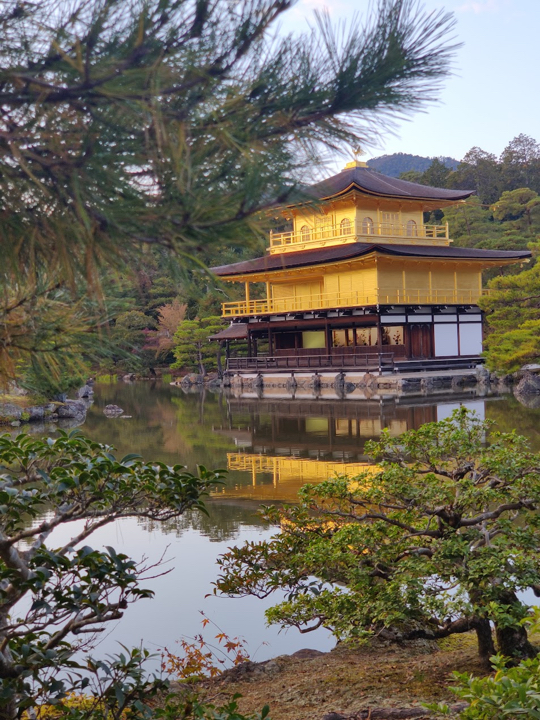
I included Kyoto in my trip because of the various temples with different architectural styles, religious practices, and cultural significance. I explored two prominent types of temples: Shinto shrines and Buddhist temples. Shinto shrines (Jinja) are places of worship dedicated to kami, the divine spirits or gods in the Shinto religion. These shrines can be identified by their distinctive torii gates at the entrance and often feature vermilion-colored structures. Shinto emphasizes the connection between the spiritual world and the natural elements, and shrines are usually situated in scenic locations, surrounded by gardens. On the other hand, Buddhist temples vary in size and architectural style but typically include a main hall, pagoda, and various auxiliary buildings. These statues of Gautam Buddha are centers for meditation, rituals, and ceremonies. Kyoto is famous for Buddhist temples like Kinkaku-ji (the Golden Pavilion), Ryoan-ji, and Kiyomizu-dera.
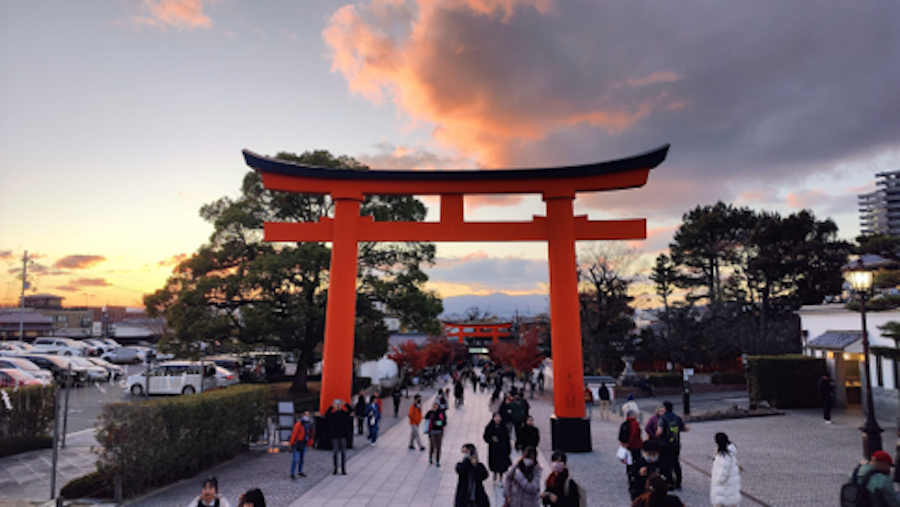
The infusion of Buddhist teachings from India profoundly impacted Japan, fostering a philosophical and spiritual foundation. One of the Buddhist temples that left its imprint on me was the Sanjusangendo Temple. It was a testament to the exchange between Japan and India, where Sanskrit was the ancient Indo-Aryan language. Japanese scholars and monks dedicated themselves to studying Sanskrit, paving the way for translating Buddhist texts from India to Japanese texts. The main hall of Sanjusangendo, housing 1001 statues of Kannon, the bodhisattva of compassion, included Sanskrit inscriptions and mantras on the statues and within the temple. Each statue features a serene facial expression, experiencing the spiritual resonance and artistic beauty of the 1001 manifestations of compassion. The impact of Sanskrit extends beyond the linguistic realm, as the aesthetic aspects of Sanskrit calligraphy, with its precision and beauty, have also influenced artistic expressions within the temple. I felt the creative and spiritual elements of Sanjusangendo, including the meticulous depictions of deities and the Sanskrit-based chants during the rituals. The teachings of Zen masters, often rooted in Sanskrit scriptures, introduced a unique blend of spiritual introspection and disciplined living. Confucianism, another influential philosophy in Japan, imparted ethical and moral values that became foundational to Japanese society. Integrating these teachings into everyday life contributed to a harmonious society prioritizing order, mutual respect, social harmony, and introspection.
Kyoto is also renowned for its food. Nishiki Market, often called “Kyoto’s Kitchen,” spans a narrow, covered street with over a hundred stalls, shops, and restaurants. The market serves as a haven for food enthusiasts and provides a glimpse into the region’s culinary traditions. Next to Nishiki Market was Gion, a famous geisha district. The district’s well-preserved traditional machiya architecture and narrow streets created a charming atmosphere. I could relate to the book Memoirs of a Geisha, as I wandered through the narrow alleys of Gion.
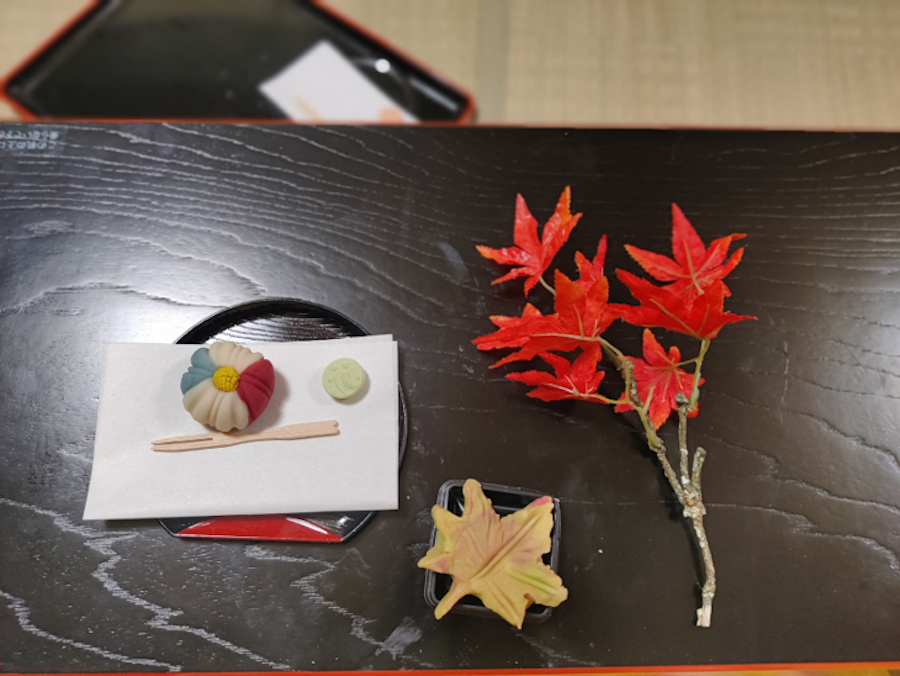
Uji, an enchanting town near Kyoto, is a tranquil retreat just a train ride away. Revered as the birthplace of Matcha, Uji is a pilgrimage for tea enthusiasts. The town’s verdant tea fields and houses offer a scenic backdrop for delving into cultivating and processing matcha. Various matcha-flavored delights, from traditional wagashi (Japanese sweets) to modern desserts, are showcased. To my delight, I was thrilled to encounter a statue of Murasaki Shikibu, the celebrated author of The Tale of Genji, situated at the end of Uji Bridge.
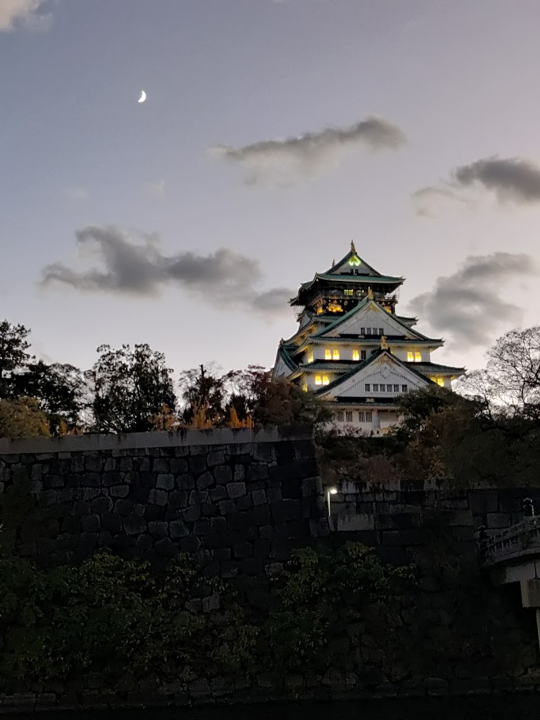
The next stop was Osaka, celebrated for its diverse and delectable street food, including iconic dishes like takoyaki and okonomiyaki (savory pancakes). The city’s skyline is adorned with contemporary architecture, including the Umeda Sky Building and Osaka Castle, symbolizing its feudal past. Dotonbori Street, with its neon-lit signs and vibrant entertainment district, is a lively hub for nightlife and cultural experiences. From Osaka central, a forty-five-minute train journey to Nara traverses picturesque landscapes, offering glimpses of urban and rural scenery. I walked through the streets of Nara, encountering centuries-old temples, charming gardens, and the deer park. I visited landmarks like Todai-ji Temple and Kasuga Taisha Shrine. That was a seamless transition from Osaka’s vibrant energy to Nara’s timeless allure.
Ise-Shima National Park
The subsequent destination was Ise-Shima National Park, nestled within the boundaries of Mie Prefecture in Japan. Ise-Shima National Park is a testament to Japan’s commitment to preserving its spiritual and environmental treasures. What distinguishes this national park is its intimate connection to the sacred Ise Jingu Shrine, one of the holiest Shinto sites in Japan. Ise Jingu consists of two main shrines, the Inner Shrine (Naiku) and the Outer Shrine (Geku), both dedicated to the Sun Goddess Amaterasu. Surrounded by ancient forests, these shrines are meticulously rebuilt every twenty years in the traditional architectural style, representing a spiritual renewal. This reconstruction symbolizes the cycle of life, death, and rebirth, reflecting the impermanence inherent in Shinto beliefs. I found Pilgrims and visitors at Ise Jingu who were paying homage to their ancestral deities.
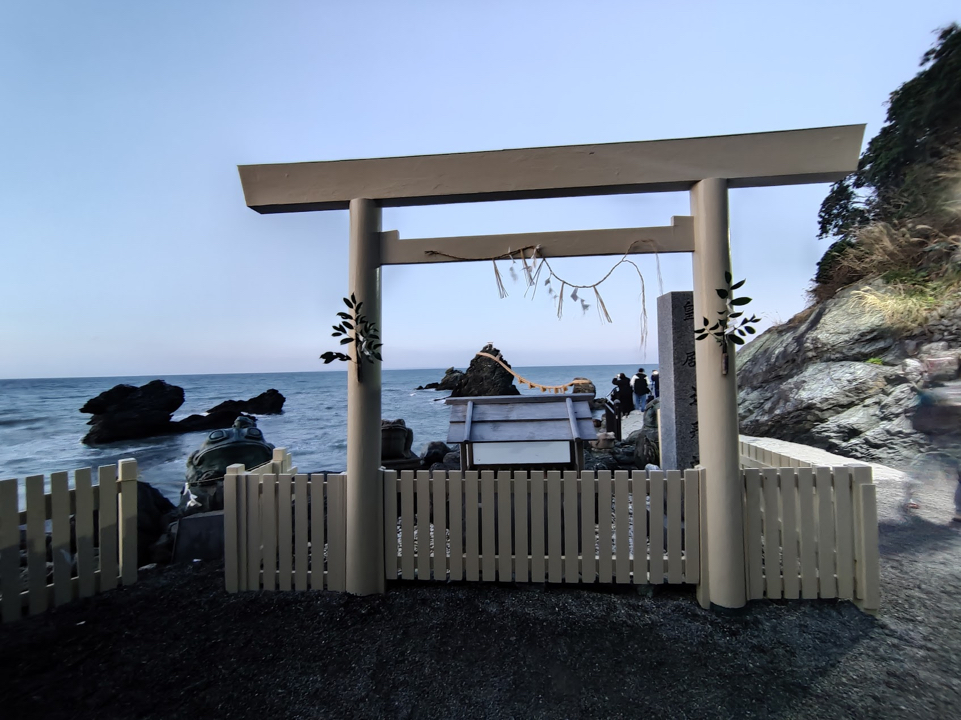
Meoto Iwa, situated within the expanse of Ise-Shima National Park, is a natural and spiritual wonder. Also known as the “Wedded Rocks,” these two iconic granite rocks rise from the azure waters, connected by the sacred Shimenawa rope, symbolizing the eternal bond between the Shinto deities Izanagi (male) and Izanami (female). This holy site, set against the coastline backdrop, not only represents the union of divine forces but also serves as a powerful emblem of marital harmony and fertility in Japanese culture. I stood there, staring at the sea silently as the sun slowly vanished. The waves crashed down on the rocks as the dusk gave way to a night sky. Meoto Iwa is a testament to Japan’s mythology and a spot for spiritual reflection and appreciation for the region’s natural wonders.
During my stay in Ise-Shima, I rented a traditional Japanese ryokan. A ryokan is a traditional Japanese inn that encapsulates the essence of Japanese hospitality. These accommodations are distinguished by their serene ambiance, tatami-matted rooms, sliding paper doors (fusuma), and the incorporation of elements such as tokonoma (alcove for displaying art) and futons for sleeping. Guests are usually welcomed with warm tea ceremonies and the opportunity to experience yukata (casual summer kimono). Staying at a ryokan was an exceptional lodging experience.
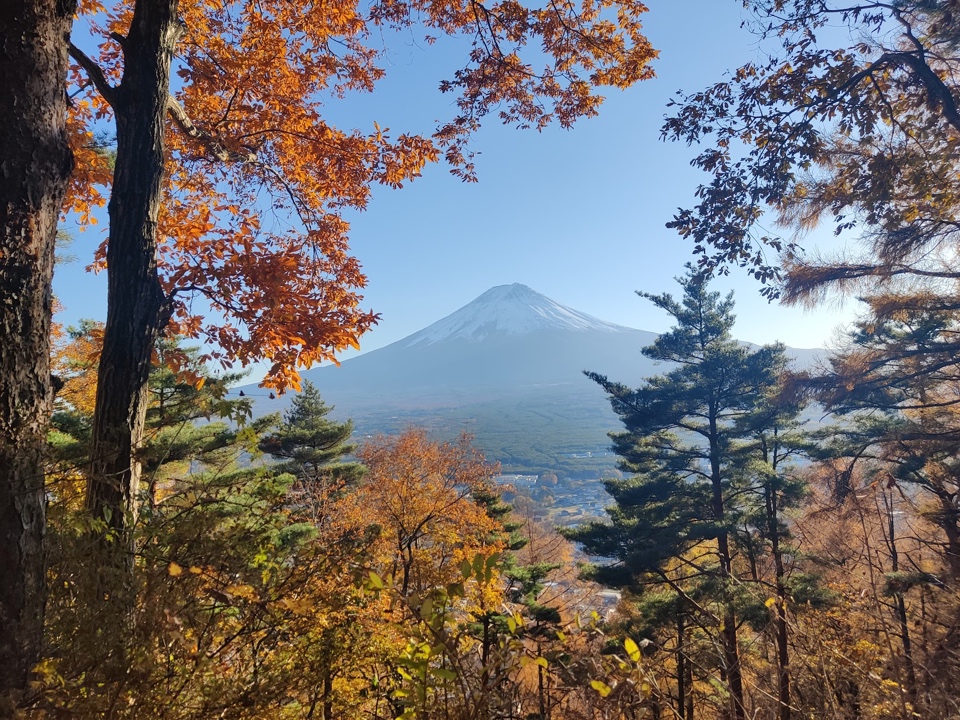
Fully experiencing the beauty of Japan necessitates a journey to Mount Fuji, and I was fortunate to explore its landscapes during the fall season. This iconic volcano undergoes a breathtaking transformation, with the slopes becoming a vivid canvas painted in red, orange, and gold as the deciduous trees change color. The cool temperatures and clear skies amplify the visibility, providing a spectacular view of Fujisan amidst the autumnal foliage. The lakes at the mountain’s base, such as Lake Kawaguchi, mirror the seasonal kaleidoscope, adding to the charm. At dusk, I cycled around Lake Kawaguchiko on a bike, with Mt. Fuji always visible. Whether admired from a distance or experienced up close, Mount Fuji in the fall emerges as a symbol of natural grandeur.
Tokyo
The next destination was Tokyo, the capital of Japan, which has a sensory journey through a blend of modernity, tradition, and cultural richness. The city’s skyline, adorned with futuristic skyscrapers and dazzling neon lights, reflects its global metropolis status. Tokyo seamlessly merges ancient temples and shrines, exemplified by the iconic Senso-ji in Asakusa, with cutting-edge technology found in districts like Akihabara. Culinary enthusiasts can embark on an adventure at the renowned Tsukiji Fish Market and explore street-side stalls, while fashion enthusiasts can indulge in upscale shopping districts such as Ginza. Tokyo’s efficient public transportation system facilitates exploration, including the iconic Shibuya Crossing and the Tokyo Metro. Tokyo’s multifaceted character unfolds from the Meiji Shrine to the lively districts of Harajuku and Shinjuku, showcasing a coexistence of tradition and innovation.
In Tokyo, one can deeply engage with Japan’s cultural richness through diverse traditional experiences. Participating in a tea ceremony provided valuable insights into the meticulous art of preparing and savoring matcha. Exploring the intricate process of crafting traditional Japanese sweets, or wagashi, added a hands-on element to the cultural encounter. Tokyo also offers a samurai experience, allowing individuals to delve into the art of wielding a katana and gain a profound understanding of the discipline and precision integral to the ancient martial arts. Engaging in both a samurai sword experience and a ninja experience was contrasting yet equally captivating.
Exploring Tokyo serves as a gateway to nearby gems like Hakone and Enoshima Island. A picturesque train journey from Tokyo takes one to Hakone, celebrated for its hot springs, iconic Lake Ashi, and stunning views of Mount Fuji. Owakudani, a geothermal valley within Hakone, is known for its surreal landscapes and unique volcanic activity, accessible via the Hakone Ropeway. The “Great Boiling Valley” features steaming vents, sulfurous fumes, and bubbling hot springs, creating an eerie yet captivating atmosphere. Owakudani provides a distinctive culinary experience with its renowned Kuro-Tamago, or “black eggs,” boiled in mineral-rich hot springs, believed to add seven years to life. This visit offers a rare glimpse into Earth’s geothermal activity. Enoshima Island, easily reached from Tokyo, was a picturesque haven with serene beaches and the iconic Enoshima Shrine. A scenic train journey and a short bridge crossing led to this lush green island, offering sandy shores and breathtaking Pacific Ocean views. Enoshima Shrine, dedicated to the goddess Benzaiten, adds a spiritual touch.
Another captivating destination was Nagano, nestled in the Japanese Alps and accessible by a scenic train ride from Tokyo. This winter wonderland boasts the famous Snow Monkey Park, where charming Japanese macaques enjoy natural hot springs amidst a snowy landscape. Nagano also enchants with historic temples like Zenko-ji, one of Japan’s oldest Buddhist temples. The town’s allure extends to traditional ryokans, delightful local cuisine, and the welcoming ambiance of Matsumoto Castle.

Experiencing an onsen in Japan as a non-Japanese visitor was a unique immersion into the country’s communal bathing culture. The meditative atmosphere, surrounded by natural beauty, offers a profound experience in the soothing hot spring waters. Being a vegetarian in Japan presented a distinctive culinary journey in a land where seafood and meat dominate traditional diets. Tasty alternatives like tempura vegetables, vegetarian ramen, soba, udon, tofu-based dishes like agedashi or yudofu, and a variety of pickled vegetables showcase the versatility of Japanese cuisine for those with a vegetarian palate. Exploring temple food, known as “shojin ryori,” added a spiritual dimension, as it is deeply rooted in Buddhist traditions, emphasizing a vegetarian or vegan diet. The term “shojin” itself embodies devotion, reflecting the spiritual essence of this culinary experience.
During my journey through Japan, I lived in a nation shaped by both hospitality and reserve, likely influenced by the Edo period’s 250 years of isolation. The Japanese exhibit a preference for solo dining, computer games, and a disciplined approach to work. The absence of low-level corruption contributes to a secure tourism environment. Japan’s unique blend of ancient traditions and modern innovations, coupled with breathtaking landscapes and culinary diversity, created an enchanting experience. The warmth and politeness of Japanese society, combined with a deep respect for others, contribute to an inviting atmosphere. From technological prowess to historical richness and seasonal festivities, Japan captivates with its multifaceted appeal, making it a memorable and unique destination.
